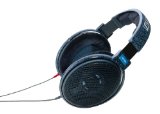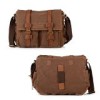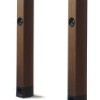Sennheiser HD 600 Open Back Professional Headphone
Sennheiser HD 600 Open Back Professional Headphone
- Lightweight aluminum voice coils ensure excellent transient response
- Neodymium ferrous magnets maintain optimum sensitivity and excellent dynamics
- Sophisticated design, elegantly finished in black and gray
- High-quality open metal-mesh earpiece covers
- Detachable, Kevlar-reinforced oxygen-free-copper cable with very low handling noise
Sennheiser HD 600 Audiophile Headphone HD600 Headphones & Earphones
List Price: $ 399.95
Price:
Similar Posts






HD600 vs. Many Other Headphones,
If this is your first foray into high-end audio, you’re listening at home, and you can afford a decent amplifier, buy these cans before you splurge for any others.
Let me first attempt to burnish my credibility. I’ve had my HD600s for a few weeks. I’m not Steve Guttenberg and I haven’t heard every system on earth. I have installed a number of 4-figure 7.1 systems, designed and installed my own room correction, and annoyed the Magnolia people at Best Buy by spending way too long running my own demo material through 5-figure Martin Logan electrostats. Also, I didn’t spend my youth at KISS concerts, so at least for now, I’m not deaf.
Some cans I’ve owned or still own:
Grado SR80 (open, dynamic, $100)
Sony MDR-7506 (closed, dynamic, $100)
Oppo PM3 (closed, orthodynamic, $400)
Hifiman 400i (open, orthodynamic, $500)
I compared all of them back to back with these HD600s for many hours through a huge variety of well-recorded material, in all cases with an O2/ODAC. This latter component has ruler-flat response and zero audible distortion; I’m not messing with the output with anything that might favor one can at the expense of another.
My short take is this: start with these HD600s. Mixing, pleasure listening, whatever; if your environment allows for open cans, start here. Nothing cheaper is a more complete product in aggregate. You can spend more and get improvements in some areas, but almost always with commensurate disadvantages elsewhere. Plenty of folks with $1500 HD800s keep their HD600s anyway for when they tire of the pointed treble of that otherwise stellar can. Orthodynamics and electrostats can top them in the midrange and highs, but often lose on bass impact.
Start with the HD600s so you can find out what you like. Because it’s been around for 20 years as an audiophile benchmark that everyone’s heard, you can find endless measurements and comparisons. A sentence that starts with, “I like my HD600s except for …” is likely to bear more fruit than any other reference.
That in mind, let’s talk about how they’re designed and how they compare with the others above.
OPEN VS. CLOSED:
Headphones are just small speakers. With any speaker, you only want to hear one side. The other side makes the same noise at the same volume, but reversed in phase. If you could magically direct both sides at each other, they’d cancel out. (This is incidentally why it’s important not to wire a channel backwards in your home stereo. Weird frequency nulls ensue.) We therefore need to do something with the reversed signal so it won’t pollute the primary.
Closed cans (and conventional box speakers) cover the back of the driver with baffling material to absorb the sound energy. While this approach doesn’t want for accuracy or frequency response, it does tend to make the listening space sound smaller. Open headphones (and “infinite baffle” speakers) solve the baffling problem by not solving it; they just vent the back of the speaker into a huge space. Great for acoustics (no need to account for backpressure and the like), but at the cost of treating the missionary one seat over to your collection of Eazy-E.
Sennheiser assumes you’re listening at home with this can, so they’ve opted for an open design.
BUILD:
These are not fashion or luxury headphones. The’re light and plasticky with a marbled gloss finish that must have been avant garde in 1995. While I’ve heard good things about the long-term durability of the ear pads, overall quality (box included) seems little better than with the pair of HyperX cans I just bought for $60. That middling impression was reinforced a few weeks after purchase when I started getting intermittent cutouts in one channel.
This is a problem they’d supposedly solved eons ago. Sennheiser’s warranty support was responsive, but they wanted me to send back the old cable before they’d ship me a new one. (Counterpoint: Logitech’s repeatedly sent me replacement Anywhere MX mice with little more than a request and a serial number.) That wasn’t worth the hassle. I bought an aftermarket version on the big auction site for $15 that’s been reliable for months.
SOUND AND COMFORT:
Comfort is excellent. I have a big head and big ears. There’s a lot of compression and I had to stretch the band a bit. After that, the light weight and plush cups that actually fit around my ears were easy to forget. The SR80 are on-ear and uncomfortable, the PM3 are on-ear (for me) and very uncomfortable, the 7506 are on-ear and equally comfortable (because they have no clamping pressure), and the 400i are over-ear and equally comfortable.
Treble is very good. Clean, not strident, and neutral or very slightly forward. On par or better than the 400i for most material. The PM3 is noticeably recessed, but otherwise excellent. The…
Read more
Was this review helpful to you?

|Incredible value!,
Consider it this way: Let’s call a CD 10 dollars. Let’s say you get a certain amount of pleasure from a new CD: new sounds, new music, a new experience to last you a few weeks before it gradually inches its way into the dusty corners of your collection.
Now, let’s say you have about 100 CDs.
These headphones are now worth about … because you have never heard any of those CDs before. These are headphones that revolutionize all the music YOU ALREADY OWN!
But be warned: remember how when CDs first came out there were all those pretentious warnings about how the superior quality of the recording may expose flaws in the master that you could never make out before? I always thought there might be some audiophile somewhere who could hear some “flaw”.
But with these headphones you can hear a good studio from a cheap one. I can hear the buzz of unshielded electronics in the second rate studio on some indy cds. Some of my beautiful old classical music suddenly sounds muffled and dead, flattened by an unflattering production job that my speakers could not convey.
The clarity is unreal. Guitar strings are made of gold and they ring clear as crystal; layers of techno pile atop each other in multicolor, multidimensional textures that knock you breathless; the exotic reverberant groan of a cello solo that you have heard a thousand times will bring tears to your cheeks.
And all of this at a fraction of the volume you might play music on your speakers with: these headphones are brilliant and clear and perfect at low volumes. Given their open air construction these things may well preserve your hearing for an additional decade.
I cannot recommend these highly enough.
Was this review helpful to you?

|The Best Dynamic Headphone in the World,
It should be noted these headphone have an impedance of 300 ohms. Most headphone are 16-32 ohms. What this means is to get the full potential out of them you will need some type of amplifier. Headphone.com offers a couple inexpensive sollutions to this problem, as does audioadvisor.com. Althought they are not true audiophile components, they will greatly enhance your experience with these headphones. If you are planning on travelling with them, you can almost bet you won’t be content with their sound when powered only by a portable CD player. I use a Audio Valve RKV Mark II Headphone Amplifier at home, and the headphone.com Airhead on the road. Buy these headphones if you are looking for true audiophile sound, or just the best dynamic headphone, but be aware of their limitations without am amplifier.
Was this review helpful to you?

|